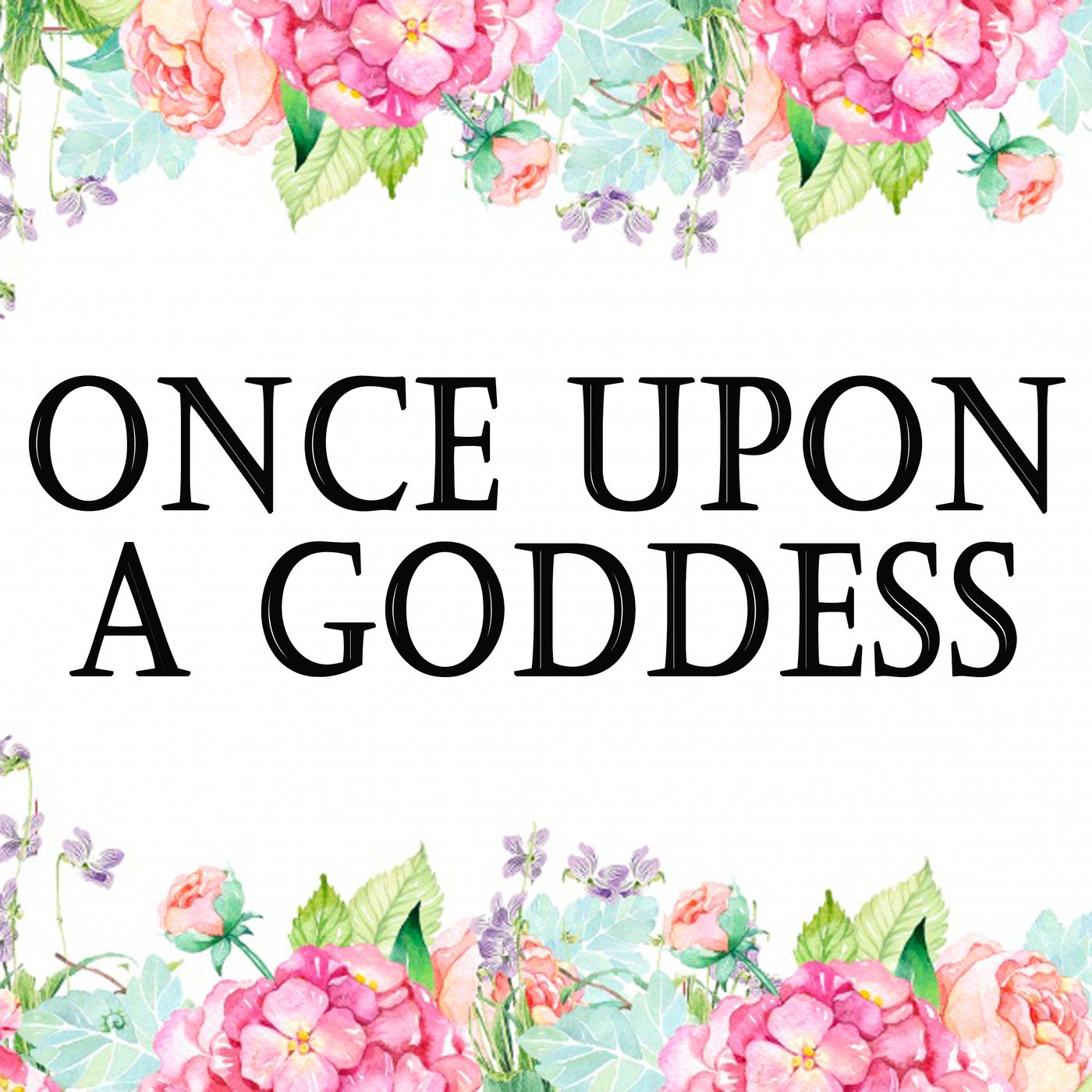Show Notes
The Lakota are one of the many tribes of Native Americans and White Buffalo Calf Woman is the first Goddess story I tell from a First Nations culture. White Buffalo Calf Woman’s story is all about remembering our connection to spirit and nature, and how this connection allows our prosperity and peace.
Show Transcript
Her story begins nineteen generations ago upon the lands of the Lakota nation.
It was a time of great hardship, and the Lakota people were suffering. Food was scarce and there were fears as to how the tribe would survive another year. So the elders sent out the warriors; the strongest of the men, to search for food and supplies.
Two of the younger men walked their own path and were soon upon a great, open plain. Ahead of them they could see a small pocket of mist and looked upon it with curiosity. Then a form appeared within this haze, and they realised it was a woman.
They ventured closer and saw that she was young and beautiful. She was wearing the hide of a white buffalo and it seemed to shine in the bright sunlight. Her hair was loose, falling freely down past her shoulders, save for one strand that was braided with buffalo fur.
One of the men was filled with lust and smiled as he stepped forward to make good of his feelings for her. The other warrior sensed his intention and grabbed his arm in an attempt to protect the woman.
“Surely she is wakan. A holy woman,” he said, hoping this would quash his companion’s aims.
But the lustful one pulled his friend’s hand from his arm and continued towards the woman.
The woman remained still and silent as the warrior now stood before her. It was then that the mist thickened, growing tall and wrapping around them both. Soon the one who had stood back could not see either of them through the heavy cloud as it swirled and twisted around the warrior and the woman. The man expected to hear the woman cry out, but instead he heard his companion bellow and shriek in pain.
Then in an instant, the cloud dissolved and once more the warrior could see the young woman. However, she was standing alone, and at her feet was a pile of bones which he knew belonged to the warrior. His horror at realising this froze him in place and now the woman stepped towards him.
“I will not harm you,” she said softly just as he was gathering his wits to run. “I know your heart is pure, unlike the other.” She pointed to the mess of bones she had just stepped over.
Then she continued, “I know your people are suffering and I can help. Go home to them now. Tell them to be ready in four days. I will arrive and I will show you the way back to the harmony that you are missing.”
Then another mist rose, once more enveloping the woman and carrying her away.
The warrior, overcome with emotion, fell to the ground. Even though she was gone he thanked the woman for sparing his life and promised to pass her message on.
The Lakota elders listened intently upon his return to the tribe. They knew the woman was indeed wakan and would guide them back to prosperity. Preparations were begun with vigour and excitement for her arrival.
Just as she had promised, the holy woman arrived on the fourth day. It seemed she floated in upon a mist just as the young warrior had described his original meeting with her. She still wore the hide of a white buffalo, and in her arms was a small bundle and a fan of sage leaves.
The elders welcomed her and invited her to sit with them by the fire that burned in anticipation of her arrival. Before she sat though, she walked four times sunwise around the fire, smiling as she looked at the flames and felt the honour of how the Lakota had prepared for her visit.
Then she sat with the elders and unrolled the bundle she had been carrying. Within was a small bowl shaped from clay and a hollowed rod made from wood. She lifted the bowl with her left hand and the rod in her right, holding the two pieces up for all to see. Then she pushed the rod onto a small fitting that jutted from the bowl so that what she now held was a pipe.
“This is the chununpa and it is sacred. Let no one who is impure hold this.” she said as she handed it to the most senior of the men, who held the bowl in his left hand and the stem with his right just as the wakan woman had, and how anyone who held the sacred pipe would forever more.
The woman showed them how to fill the bowl with tobacco and how to light it. Then once these practicalities were complete the wakan woman taught them just how holy the pipe was.
She told them how the joining of the bowl and stem represents unity; between the earth and all the living beings upon it as well as between the masculine and the feminine and to remember this each time they placed the two together.
As the tobacco burned and the smoke curled up, she told them that smoke was the breath of Wakan Tanka, the great grandfather spirit. To smoke the pipe was to take your breath and blend it with his, so that the prayers and intentions you made while smoking would be sent straight to his heart.
This was no token tool for simple ritual. To pick up the chununpa was to declare you were ready to commune with the great spirit, and that you did so with clear and honourable purpose.
“For this is what has been missing,” the wakan woman explained. “You have lost your connection to spirit. The sacred pipe will be your way back. It will be your reminder. It will be your bridge to Wakan Tanka.”
Only men would smoke the pipe. However, once a woman passed through menopause then they too could smoke the pipe. This was not because menstruating women were deemed impure or not worthy. The holy woman explained that their monthly bleed was a sacred rite within them. Each month they had an intimate reminder of their own unique spirit connection that they could embrace.
The sacred pipe would also be the foundation for many of the sacred rituals that the woman would now share with them. These rituals would remind them how spirit was always with them, and how to invite it deeper into their lives. They would help to clear the Lakota people of the imbalances that human existence can succumb to and in doing so invite peace, harmony and balance for all living beings.
The first of these rituals was Inipi; meaning “to live again”. This would be a ritual of purification also known as the sweat lodge. The lodge or hut to be used would be covered in skins so that no light could enter. A holy man would cleanse the space by smoking the sacred pipe and praying. Hot stones would be placed in the centre of the lodge and the participants would sit upon a floor of sage that circled the stones.
With the lodge closed, water would be poured on the hot stones, creating steam. Those within would let the heat take them into another awareness. Here with their senses elevated they would commune with spirit.
This was not a test of strength through suffering. If a participant felt discomfort or weakness at any time they could cry out the sacred phrase-
“Mitakuye oyasin”
It was a call to all the ancestors and relatives, living and dead. It was the reminder that all were connected. That we are all one.
When one spoke this in Inipi they could leave the lodge for respite or their completion of the ritual with compassion and understanding.
During the ceremony the door of the lodge would be opened four times; to represent the four ages. The heated stones would be replenished and the door closed again for the ritual to continue. After the fourth opening, the participants would exit the lodge.
They would leave the dark and enter the light- just as they had done at birth. For the lodge had now become a womb for their rebirth, as they shed and left behind them any impurities.
The next ritual the wakan woman gave the Lakota was Hanjbleceya- the vision quest. Unlike Inipi this was not a communal ceremony but a personal rite done in isolation. The person taking part would spend four days separated from the tribe. They would fast, not be taking in any food or water.
Now, completely disconnected from the comforts of their tribal village they would commune with spirit, asking to be shown their destiny and purpose in life. Some would hear a message. While others would see a vision.
“Let spirit reveal to you, your sacred place within the world,” she said.
They would then return to the tribe with their precious communication and share it with a holy elder who would interpret it for them and guide them into how to make this message part of their life.
The holy woman then told them of Win-a-ke Wa-ch-ipi- the Sundance – a ceremony that would signify a time of renewal for the tribe.
Chosen warriors were sent into the forest to fell a tree with instruction that it not touch the ground as it falls. The tree was then cleaned of its branches, now becoming a pole to be placed at the centre of a great dance circle.
For four days the dance would begin at sunrise. Younger male warriors would be the dancers, looking into the sun the entire time, whilst their families would sit outside the circle praying for them.
The warriors too would pray as they danced, asking spirit to strengthen them. They would ask that their hunting skills be sharpened, that their healing practices become powerful and that their fighting abilities become stronger. These were prayers not only to empower themselves but to nurture and protect the tribe. Their endurance over the four days amplified all the prayers, deepening the blessings that spirit would grant to them all.
The Lakota would also learn of Hunka- the making of relatives to remember we are all connected.
“For as we remember our love of the Great Creator so too, we can remember our love for our fellow man and woman,” she said.
The first Hunka was used to unite the Lakota and Ree people, establishing peace between the tribes. As they united, they remembered they were born of the same spirit and this reminded them of the spirit within them. As they established peace between the tribes so too they could remember there was peace within them.
As time went on the Hunka was used to remember this unity and in doing so it also made the declaration that no one could ever be orphaned or left behind. This agreement ensured that all would be cared for, regardless of any blood ties. So Hunka becomes adoption in an even greater sense, embracing the energy of “Mitakuye oyasin”- remembering we are all part of the one family.
Then the woman gave the Lakota the ceremony of Is-nati Awi-calo-wann-pi- the coming-of-age rite for women.
‘For when a young girl has her first bleed, it should be acknowledged and celebrated for it marks the beginning of a sacred rite within her,” she declared.
A tepee was to be built with thirteen poles, symbolising the thirteen moons a woman has each year. This space would then be cleansed by a holy man smoking the sacred pipe within it.
The young girl being celebrated was taken to the tepee and older women would feed, bathe and groom her, so that she could spend some final time as a child. Over four days the women would share with her all that she needed to know about this new phase of her life so that she would be prepared for motherhood and the responsibilities and duties of womanhood.
When her ceremony was complete a great feast would be held by the entire tribe and she would be presented to them all, now as a woman. She would then serve food to the elders; mostly in thanks but also in doing this she would pass on to the tribe the blessings she had received during her rite.
When the holy woman had finished revealing her wisdom she made her farewell and gave one final sharing.
She told the Lakota, “There are four ages of mankind unfolding. I will come to you in each age to remind you once again of your connection to Wakan Tanka. The final age though will be much different to all the others. For in that final age, all the trouble of mankind will be banished. In that final age total harmony and peace will finally reign forever more.”
The tribe gathered to say goodbye and to watch as she made her way back out into the plains. She walked a short way and turned to look at the tribe one more time. Then she sat upon the ground. As the people watched with curiosity she began to stand but she changed into the form of a black buffalo calf. The black buffalo calf now made its way from the village but after a short while it too stopped and fell to the ground. As it gained its feet it changed into a yellow buffalo calf.
The yellow buffalo calf travelled a brief way. Then as before it dropped to the ground and when it rose it was now a red buffalo calf. A few more steps and the red buffalo calf repeated what the others had done before. It rolled upon the ground and stood up in its final form, as a white buffalo calf.
Four colours to represent the four colours of mankind.
Four colours to represent the four directions and the four seasons.
Four colours to represent the four ages the holy woman had spoken of.
The Lakota now knew when the white buffalo calf was born then they were in the final age.
Its birth would herald the return of the White Buffalo Calf Woman and the age of eternal peace would begin.
The white buffalo calf walked over a hill and from their view. As she did, a huge herd of buffalo appeared within the plains and surrounded the village. Now the tribe had all they needed to ensure their survival for years to come.
Several white buffalo have been born in modern times. Unfortunately, most do not survive for very long. The most famous was a male called Big Medicine who lived for twenty six years. His remains have been preserved and are on display in a museum in Montana. The most recent white buffalo to be born was also in Montana in September 2020. Given the troubles within politics and the pandemic ravaging North America at this time many feel this was indeed a sign of hope from spirit.
Listen to the audio of this story at
https://www.spreaker.com/user/8255993/white-buffalo-calf-woman
©2021 Marisa Calvi
Translations and sharing are allowed
if no fee is charged and that proper credit is given to its source.
Listen On
Also Listen
-
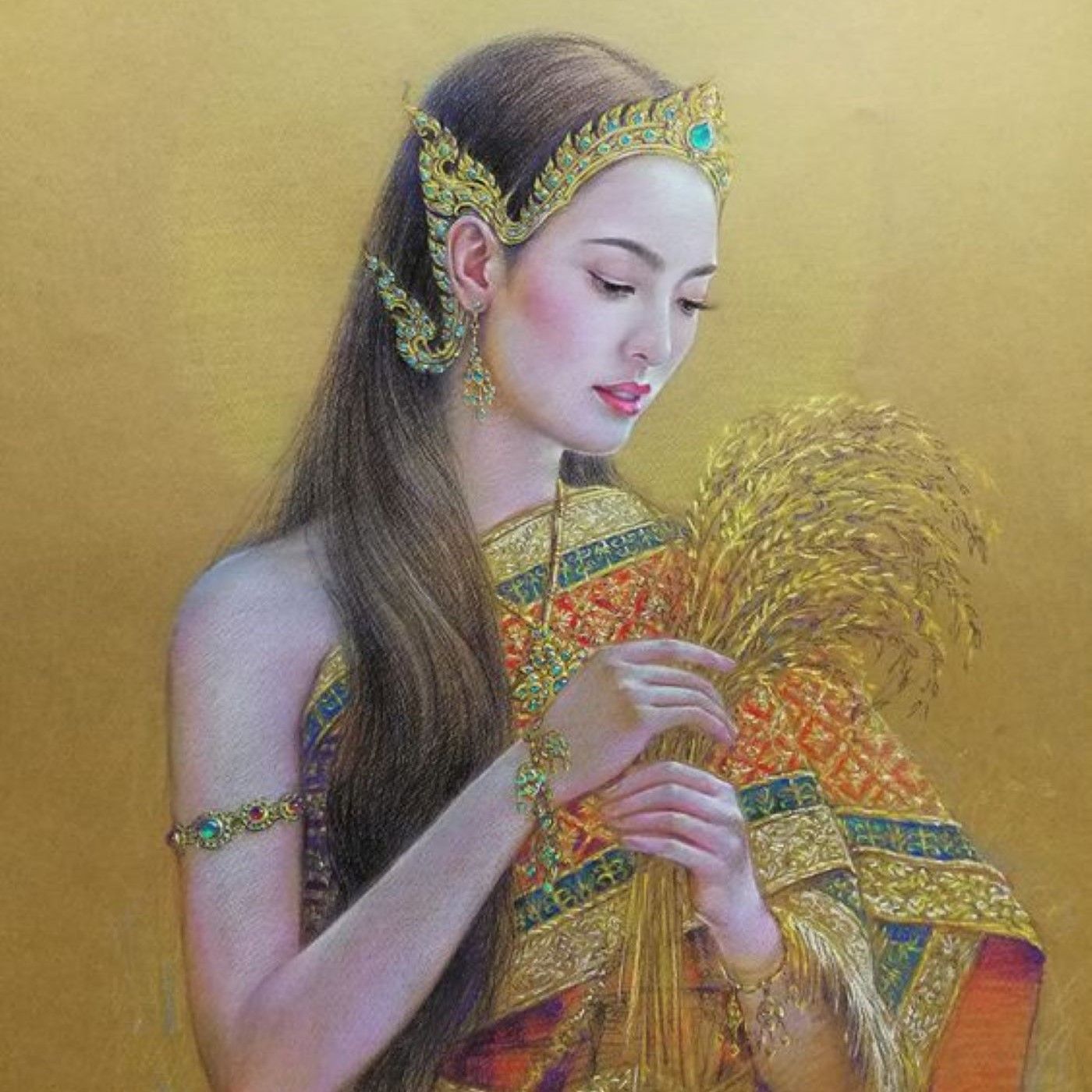
Dewi Sri - The Rice Goddess
Dewi Sri is not your usual goddess of grain and harvest. Born as a gift to the K -
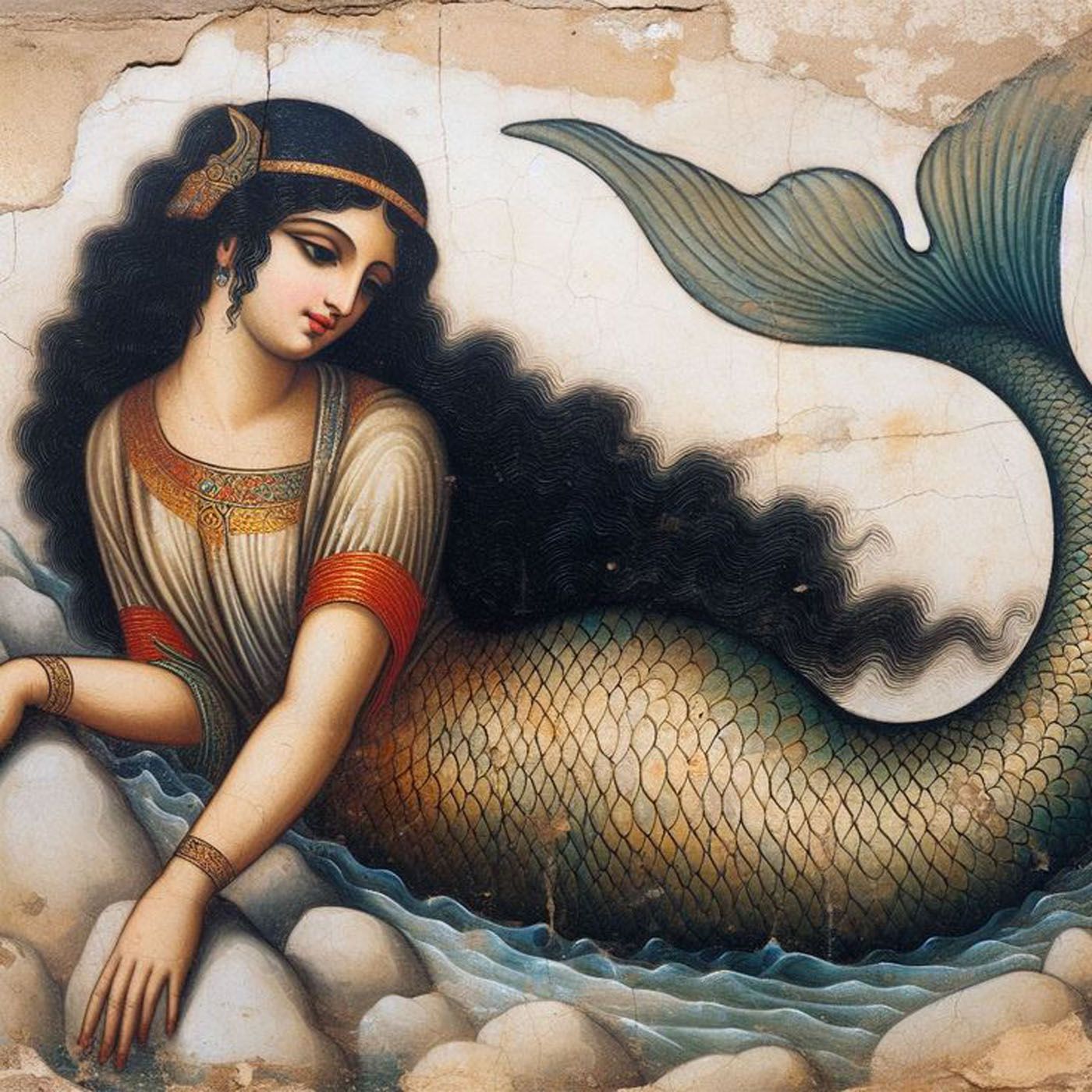
Atargatis - The First Mermaid
The powerful emotions of human life can lead to great transformations. Atargatis -
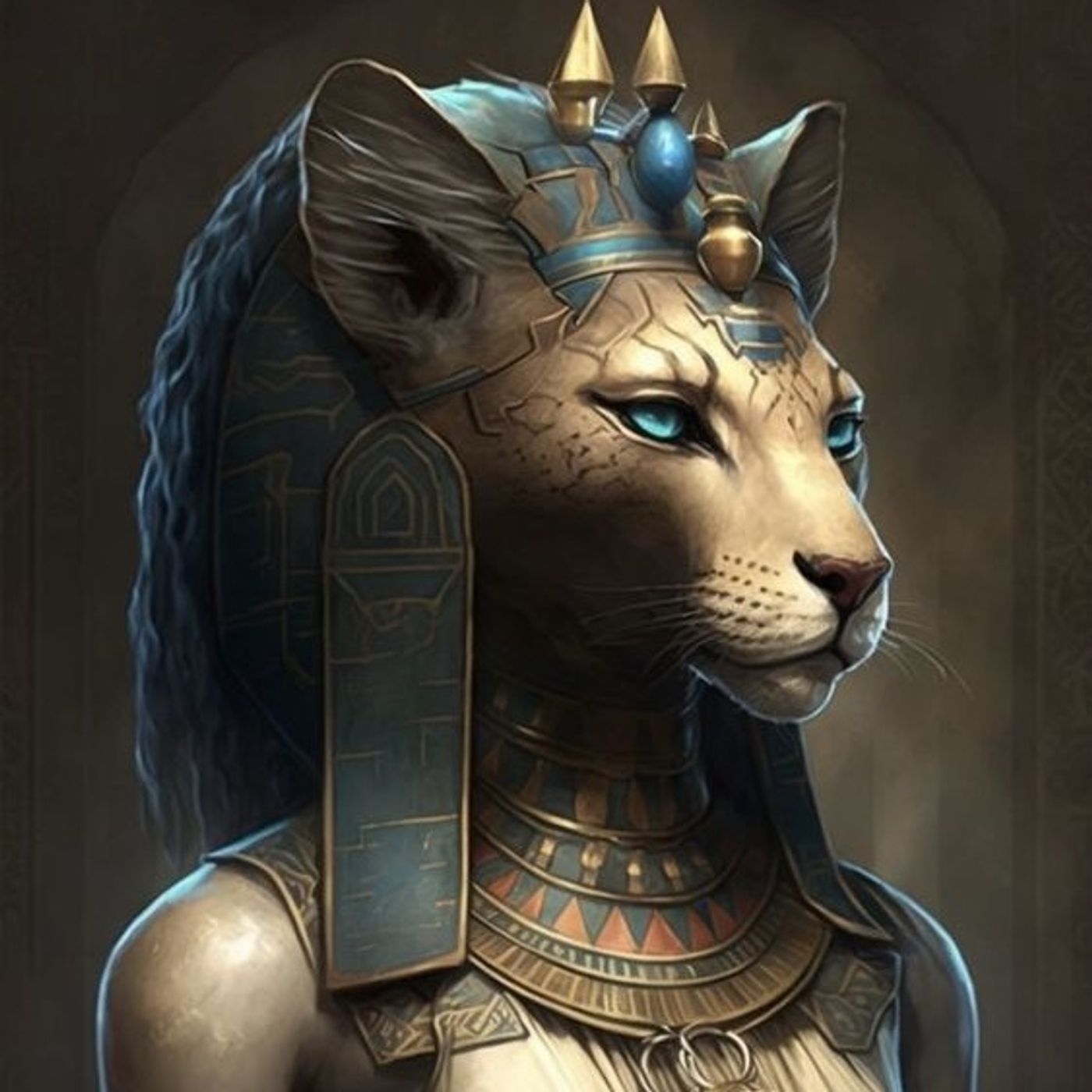
Sekhmet - The Lioness of Balance
The world and it's people live in a balance that is both fragile and all encompa -
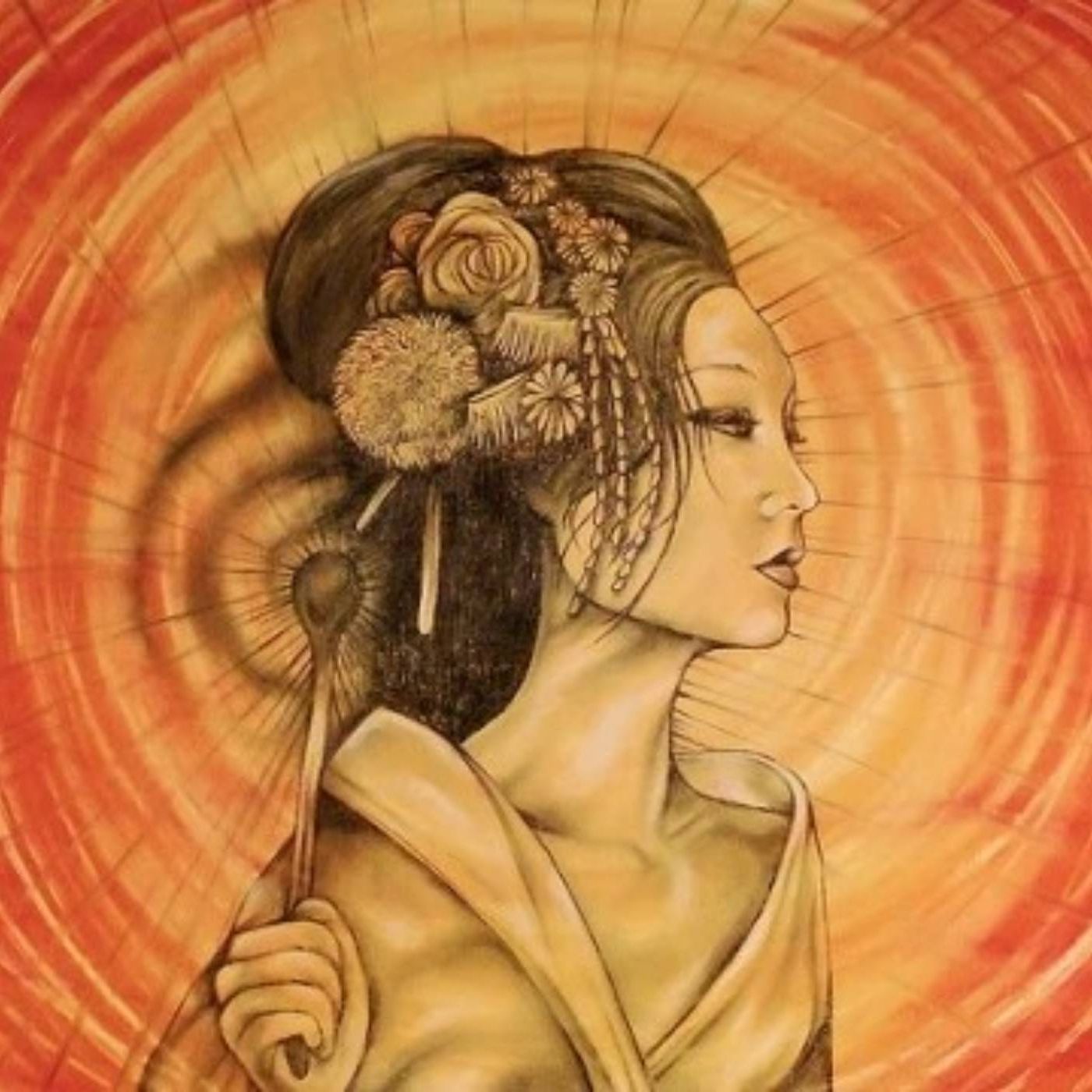
Amaterasu -The Goddess of Light
Amaterasu is the Japanese Goddess of Light. When Amaterasu is grief stricken and
